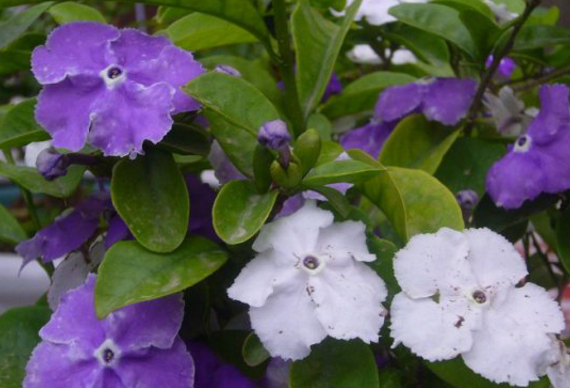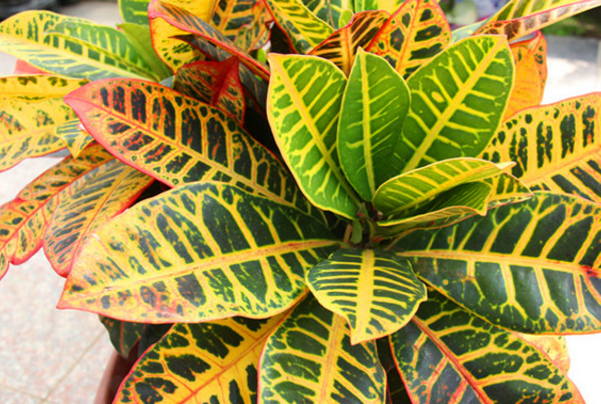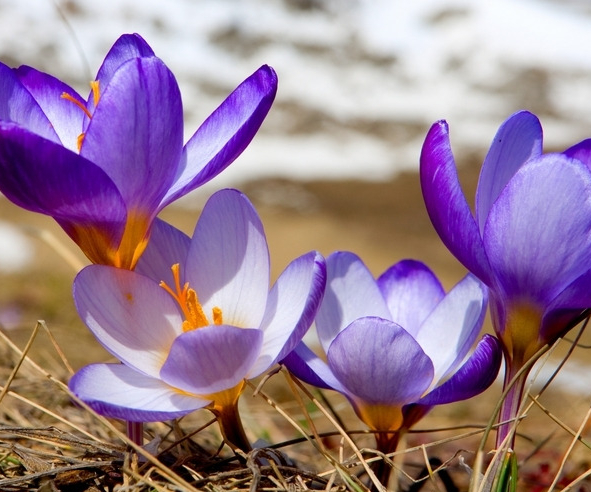What if the leaves of bicolor jasmine turn yellow? what about losing the leaves?
Bicolor jasmine is a kind of plant that can change face. yesterday, the flowers first bloomed dark blue, today they become light purple, and tomorrow they turn white. Isn't this magical plant that can change faces particularly interesting? let's take a look at the flowers that change faces.

What if the leaves of bicolor jasmine turn yellow?
1. The leaves of bicolor jasmine turn yellow: improper watering
The leaf yellow caused by long-term watering is shown in that the young leaves have no luster, the old leaves have no obvious change, the roots are small yellow-green, the new shoots atrophy is not long, should be watered with restraint, the heavy ones can be removed from the basin, and then put into the basin again after drying the soil in the shade.
The leaves yellowed due to lack of water or lack of watering. The old leaves are withered and yellow from the bottom up, but the new leaves generally grow normally. The amount of water and times of watering should be increased appropriately.
2. The leaves of bicolor jasmine turn yellow: improper fertilization
Due to excessive fertilization or excessive concentration, the new leaf tip appears dry brown, the old leaf tip dry scorch withered yellow shedding, although the general leaf surface is thick and shiny, but mostly uneven. Stop fertilizing or washing the fertilizer with clean water.
Potted flowers only water for a long time, or do not change pots for many years, the roots must form a ball, the plant can not get fertilizer points, so that leaves yellow, in addition to timely change pots, usually should be thin fertilizer diligently.
3. The leaves of bicolor jasmine turn yellow: improper lighting.
Pot two-color jasmine lack of light for a long time, the chlorophyll in the leaves decreases, so that the green leaves gradually disappear, showing albinism, the plant can be moved to a sunny place, so that the leaves slowly turn green.
4. The leaves of bicolor jasmine turn yellow: the soil is alkaline.
Two-color jasmine is a flower that likes acidic soil. If the potted soil or water quality is too alkaline, it often causes the leaves to change from green to yellow, or even fall off. In addition to being cultured in acidic and nutritious soil, you can use alum fertilizer water or 0.2% mai 0.5% ferrous sulfate solution to spray the leaves from yellow to green.
5. The leaves of bicolor jasmine turn yellow: the temperature is uncomfortable.
Two-color jasmine is not resistant to high temperature, high humidity, yellowing caused by hot summer, bad storm and improper shade avoidance. Pay attention to ventilation and cooling, and the basin soil should not be overheated.
In addition, in the cold winter, such as low indoor temperature, the leaves of bicolor jasmine will turn yellow and fall off. In addition, it can also cause yellow leaves to fall off when harmed by diseases and insect pests. It is normal if a few leaves turn yellow and fall off in the lower part of the plant.
What if the leaves fall off?
There's always a reason for losing leaves. We should explore cause and effect before we talk about treatment.
The reason for the loss of leaves of bicolor jasmine:
1. Lack of light
Bicolor jasmine is one of the flowers that like light. It is necessary to keep sufficient light when raising bicolor jasmine, even in hot and hot summer. If there is not enough light, it will cause dichromatic jasmine to lose its leaves.
2. Lack of water
When cultivating bicolor jasmine, it is necessary to keep enough 10%, because bicolor jasmine likes to be wet, but it is not resistant to stagnant water, and it will lose its leaves if it is watered less.
3. Lack of fertilizer
Bicolor jasmine needs adequate nutrient support in the relatively exuberant season, and fertilization must be sufficient to make it grow vigorously and blossom well. If there is not enough fertilizer, it is easy to lose the leaves.
What if the two-color jasmine loses its leaves:
1. Keep enough light
When raising bicolor jasmine, you need to maintain sufficient light, preferably in a sunny place, not too hidden.
2. Rational watering and fertilization
When raising two-color jasmine, watering should be watered on the surface of the soil when it is dry, and be careful not to get too wet. Every time you water it, you need to water it thoroughly, not just a little water. Fertilization must meet the growth needs of bicolor jasmine, so that it has sufficient nutrients.
3. Proper ventilation
The place where two-color jasmine is placed should pay attention to proper ventilation, especially when watering is more frequent, it is necessary to strengthen ventilation to avoid diseases and insect pests and leaf loss.
Two-color jasmine what if the leaves of two-color jasmine turn yellow
The leaves of bicolor jasmine turn yellow: improper watering
The leaf yellow caused by long-term watering is shown in that the young leaves have no luster, the old leaves have no obvious change, the roots are small yellow-green, the new shoots atrophy is not long, should be watered with restraint, the heavy ones can be removed from the basin, and then put into the basin again after drying the soil in the shade.
The leaves yellowed due to lack of water or lack of watering. The old leaves are withered and yellow from the bottom up, but the new leaves generally grow normally. The amount of water and times of watering should be increased appropriately.
The leaves of bicolor jasmine turn yellow: improper fertilization
Due to excessive fertilization or excessive concentration, the new leaf tip appears dry brown, the old leaf tip dry scorch withered yellow shedding, although the general leaf surface is thick and shiny, but mostly uneven. Stop fertilizing or washing the fertilizer with clean water.
Potted flowers only water for a long time, or do not change pots for many years, the roots must form a ball, the plant can not get fertilizer points, so that leaves yellow, in addition to timely change pots, usually should be thin fertilizer diligently.
The leaves of bicolor jasmine turn yellow: improper lighting
Pot two-color jasmine lack of light for a long time, the chlorophyll in the leaves decreases, so that the green leaves gradually disappear, showing albinism, the plant can be moved to a sunny place, so that the leaves slowly turn green.
The leaves of bicolor jasmine turn yellow: the soil is alkaline.
Two-color jasmine is a flower that likes acidic soil. If the potted soil or water quality is too alkaline, it often causes the leaves to change from green to yellow, or even fall off. In addition to being cultured in acidic and nutritious soil, you can use alum fertilizer water or 0.2% mai 0.5% ferrous sulfate solution to spray the leaves from yellow to green.
The leaves of bicolor jasmine turn yellow: temperature discomfort
Two-color jasmine is not resistant to high temperature, high humidity, yellowing caused by hot summer, bad storm and improper shade avoidance. Pay attention to ventilation and cooling, and the basin soil should not be overheated.
In addition, in the cold winter, such as low indoor temperature, the leaves of bicolor jasmine will turn yellow and fall off. In addition, it can also cause yellow leaves to fall off when harmed by diseases and insect pests. It is normal if a few leaves turn yellow and fall off in the lower part of the plant.
What if the leaves of bicolor jasmine turn yellow?
The leaves of bicolor jasmine turn yellow: improper watering
The leaf yellow caused by long-term watering is shown in that the young leaves have no luster, the old leaves have no obvious change, the roots are small yellow-green, the new shoots atrophy is not long, should be watered with restraint, the heavy ones can be removed from the basin, and then put into the basin again after drying the soil in the shade.
The leaves yellowed due to lack of water or lack of watering. The old leaves are withered and yellow from the bottom up, but the new leaves generally grow normally. The amount of water and times of watering should be increased appropriately.
The leaves of bicolor jasmine turn yellow: improper fertilization
Due to excessive fertilization or excessive concentration, the new leaf tip appears dry brown, the old leaf tip dry scorch withered yellow shedding, although the general leaf surface is thick and shiny, but mostly uneven. Stop fertilizing or washing the fertilizer with clean water.
Potted flowers only water for a long time, or do not change pots for many years, the roots must form a ball, the plant can not get fertilizer points, so that leaves yellow, in addition to timely change pots, usually should be thin fertilizer diligently.
The leaves of bicolor jasmine turn yellow: improper lighting
Pot two-color jasmine lack of light for a long time, the chlorophyll in the leaves decreases, so that the green leaves gradually disappear, showing albinism, the plant can be moved to a sunny place, so that the leaves slowly turn green.
The leaves of bicolor jasmine turn yellow: the soil is alkaline.
Two-color jasmine is a flower that likes acidic soil. If the potted soil or water quality is too alkaline, it often causes the leaves to change from green to yellow, or even fall off. In addition to being cultured in acidic and nutritious soil, you can use alum fertilizer water or 0.2% mai 0.5% ferrous sulfate solution to spray the leaves from yellow to green.
The leaves of bicolor jasmine turn yellow: temperature discomfort
Two-color jasmine is not resistant to high temperature, high humidity, yellowing caused by hot summer, bad storm and improper shade avoidance. Pay attention to ventilation and cooling, and the basin soil should not be overheated.
In addition, in the cold winter, such as low indoor temperature, the leaves of bicolor jasmine will turn yellow and fall off. In addition, it can also cause yellow leaves to fall off when harmed by diseases and insect pests. It is normal if a few leaves turn yellow and fall off in the lower part of the plant.
- Prev

Is sprinkling golden banyan poisonous? what if the leaves fall off?
The larger ornamental plant, the golden banyan, has a very warm name, just like the sun shining down, so the plant itself is colorful. Today we are going to appreciate Sajin Rong, which has the name of sunshine. Is sprinkling golden banyan poisonous? sprinkling golden banyan poisonous, sprinkling golden banyan, Euphorbiaceae shrub plant, its branches are small
- Next

Can I drink the culture method of saffron every day?
Saffron, this is a lot of people are very, can be regarded as Chinese herbal medicine, and if you buy this saffron, the price is still a little expensive, let's take a look at the method of saffron culture? Can saffron drink every day: the culture method of saffron: prepare the pot soil in advance.
Related
- Fuxing push coffee new agricultural production and marketing class: lack of small-scale processing plants
- Jujube rice field leisure farm deep ploughing Yilan for five years to create a space for organic food and play
- Nongyu Farm-A trial of organic papaya for brave women with advanced technology
- Four points for attention in the prevention and control of diseases and insect pests of edible fungi
- How to add nutrient solution to Edible Fungi
- Is there any good way to control edible fungus mites?
- Open Inoculation Technology of Edible Fungi
- Is there any clever way to use fertilizer for edible fungus in winter?
- What agents are used to kill the pathogens of edible fungi in the mushroom shed?
- Rapid drying of Edible Fungi

